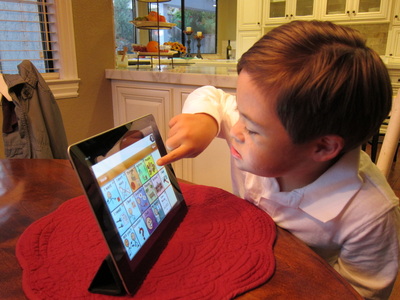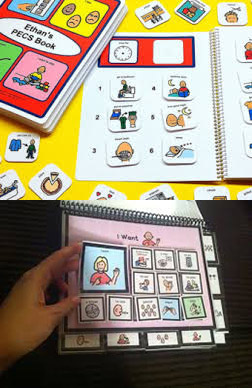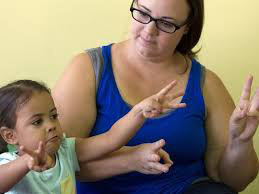Speech-Language Therapy
What is AAC?

Augmentative and alternative communication (AAC) includes all forms of communication (other than oral speech) that are used to express thoughts, needs, wants, and ideas. Facial expressions, gestures, sign language, use of pictures or symbols, or written words are all words of AAC.
People with severe speech or language impairments often rely on AAC to supplement or replace verbal speech that is not intelligible to others. Special augmentative aids, such as communication boards and electronic devices, can help people communicate and express themselves. These devices can increase a person’s social interaction, school performance, and engagement within the community.

What types of AAC systems exist?
Generally speaking, the AAC systems fall into two categories: unaided and aided. Unaided communication systems (also known as low-tech AAC systems) do not provide voice output or electronic hardware. Examples of unaided systems include:
- Gestures
- Body language
- Sign language
- PECS
- Communication boards
Aided communication systems (also known as high-tech AAC systems) are electronic devices that may or may not provide some type of voice output. Devices that provide voice output are called speech-generating devices.

How We Can Help
Individuals with severe speech or language problems rely on AAC to supplement existing speech or replace speech that is not functional.
Special augmentative aids, such as picture and symbol communication boards and electronic devices, are available to help people express themselves. This may increase social interaction, school performance, and feelings of self-worth. We at Therapy Innovations provide augmentative and alternative communication (AAC) assessments, consultations, training, and interventions to individuals who have these complex communication needs.
Services are offered in our Fayetteville and Angier offices.
